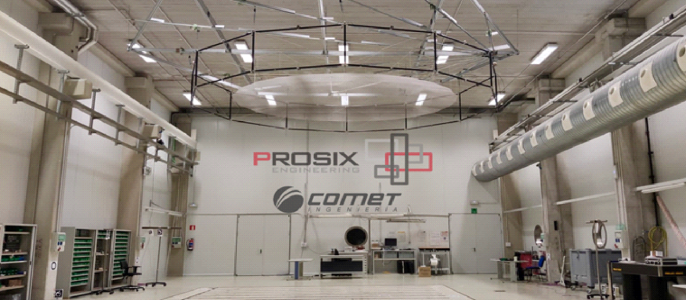In-Orbit Surface Metrology for Large Deployable Reflectors
Programme
TDE
Programme Reference
T120-601MS
Prime Contractor
Ommatidia Lidar S.L.
Start Date
End Date
Status
Contracted
Country
Spain

Objectives
To spin-in existing technology for in-orbit metrology to provide high precision surface and deployed structure shape measurements of Large Deployable Reflector Antennas (LDR)
Description
A methodology and breadboard for the metrology hardware shall be developed that can measure and determine the actual deployment accuracy of the LDR and the surface shape of the LDR in orbit with very high accuracy.
This technology is required for Earth Observation applications (e.g. SAR, radiometers) where knowledge of the reflector surface shape and pointing is required to a very high accuracy. This activity will be useful in particular for the in-orbit calibration of the antenna reflector, knowledge of reflector pointing, and actively re-pointing the reflector in orbit. This technology can compensate for the thermal-elastic loading from seasonal changes and orbital effects as well as deployment under vacuum and micro-gravity conditions.
The activity will:
- review the latest metrology technology and determine which are most suitable for precision measurement of the deployed LDR, its surface shape and pointing of the LDR in space conditions.
- The different technologies shall be traded off
- The most suitable in-orbit metrology system will be designed including hardware and software
- The metrology system and a benchmark case of an LDR will be breadboarded
- Build thermo-elastic models to predict the deployed shape under a variety of mission conditions. The model(s) shall include analysis nodes at the precise locations where measurements of displacements and temperatures are taken from the test setup, to enable quick correlation and calibration of the model with real data acquired with the metrology during the test.
- Once calibrated, the model will be used to accurately predict the deployed shape and pointing of the array under all mission conditions.
- Temperature measurements might be required to support overall surface shape predication by thermo-elastic models.
The metrology shall be demonstrated to a high accuracy (+/-0.01mm TBC) and to be suitable for reflectors of diameter 5m to 18m and with F/D of 0.5 to 1.5, under in-orbit conditions.
Application Domain
Earth Observation
Technology Domain
20 - Structures
26 - Others
Competence Domain
2-Structures, Mechanisms, Materials, Thermal
Keywords
3-Platforms / Others
Initial TRL
TRL 2
Target TRL
TRL 4
Public Document
Final Presentation
Executive Summary
